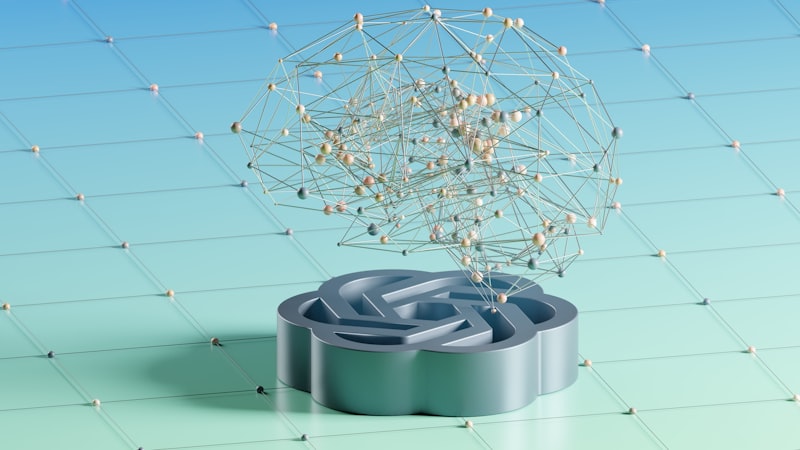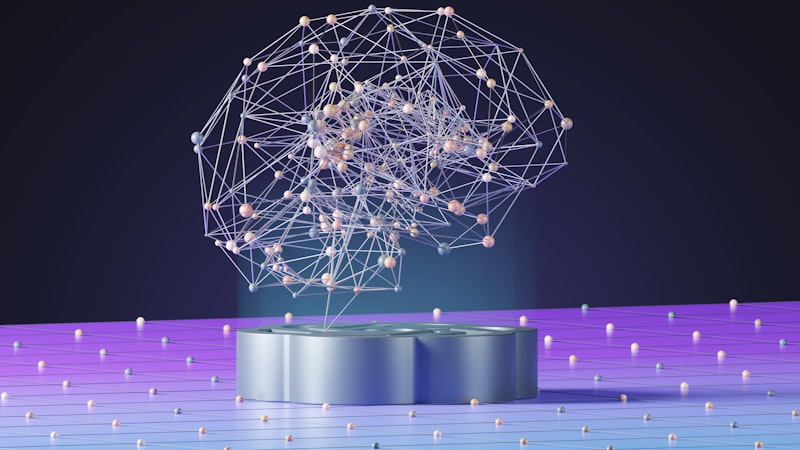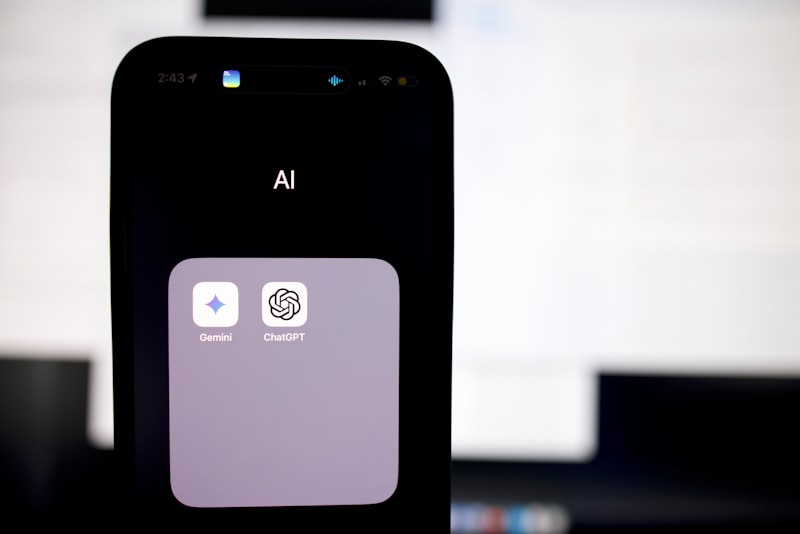Have you ever wondered what lies beneath the fascinating capabilities of ChatGPT? Well, let’s delve into the neural network architecture that powers this remarkable conversational AI model. By understanding its inner workings, we can appreciate the ingenuity behind its intelligence.
At its core, ChatGPT employs a transformer-based architecture known as GPT (Generative Pre-trained Transformer). This architecture revolutionized natural language processing by introducing the concept of self-attention. Imagine a web of interconnected nodes, where each node represents a word in a sentence. Self-attention allows ChatGPT to weigh the importance of different words when generating responses. It captures the essence of context and dependencies, enabling more coherent and meaningful conversations.
To train ChatGPT, a colossal amount of text data is used. The model learns from diverse sources like books, articles, and websites, absorbing a wealth of knowledge. This pre-training phase equips ChatGPT with a broad understanding of language patterns, grammar, and concepts. But how does it transform into a conversational companion?
Fine-tuning is the subsequent step in refining ChatGPT’s abilities. During this process, the model is exposed to specific prompts and feedback provided by human reviewers. These prompts guide the model to generate responses that align with our expectations. Iteratively, through numerous feedback loops, the model adapts to produce more accurate and coherent replies, making it a valuable virtual assistant.
However, it’s important to note that ChatGPT has its limitations. It may occasionally generate incorrect or nonsensical answers, and it heavily relies on the data it was trained on. Ethical guidelines are imperative to ensure responsible use of such technology, preventing biases or misinformation from being perpetuated.
The neural network architecture behind ChatGPT is rooted in the power of transformers and self-attention. Its ability to understand and generate human-like text is a testament to the progress made in natural language processing. While ChatGPT is a remarkable AI companion, it’s crucial to understand its limitations and use it responsibly. So, next time you engage in a conversation with ChatGPT, take a moment to appreciate the intricacies of its neural network architecture.
Unraveling the Inner Workings: Decoding the Neural Network Architecture Fueling ChatGPT’s Conversational Abilities
Contents
- 1 Unraveling the Inner Workings: Decoding the Neural Network Architecture Fueling ChatGPT’s Conversational Abilities
- 2 Peering into ChatGPT’s Brain: The Intricate Neural Network Design That Powers its Language Generation
- 3 From Algorithms to Conversations: An In-Depth Analysis of ChatGPT’s Innovative Neural Network Architecture
- 4 Breaking Down the Black Box: Understanding the Neural Network Structure Enabling ChatGPT’s Natural Language Understanding
Have you ever wondered how ChatGPT manages to engage in such lifelike conversations? It all comes down to its intricate neural network architecture. In this article, we’ll delve into the inner workings of ChatGPT and decode the secrets behind its impressive conversational abilities.
At the core of ChatGPT lies a powerful deep learning model known as a transformer. This type of neural network architecture has revolutionized natural language processing tasks. But what makes transformers so special? Well, imagine a vast web of interconnected nodes, where each node represents a word or phrase. These nodes exchange information with each other, enabling ChatGPT to understand context and generate meaningful responses.
To fuel its conversational prowess, ChatGPT leverages a variant of the transformer called the “decoder-only” architecture. This means that it only utilizes the decoding part of the transformer during inference, allowing it to focus solely on generating responses based on the given input. By employing this specialized architecture, ChatGPT can swiftly generate coherent and contextually relevant replies.
One key aspect of ChatGPT’s neural network architecture is attention. Just like when we’re engrossed in a conversation, ChatGPT pays attention to different parts of the input text. This attention mechanism enables it to understand which words or phrases are most important for generating a suitable response. By attending to relevant information while disregarding noise, ChatGPT maintains its conversational flow and coherence.
However, creating an intelligent chatbot goes beyond architecture alone. ChatGPT owes its competency to the extensive pre-training it undergoes. Prior to engaging in conversations, it spends countless hours exposed to diverse texts from the internet. Through this process, it learns grammar, facts, reasoning abilities, and even subtle nuances of human language. This pre-training lays the foundation for ChatGPT’s conversational dexterity.
ChatGPT’s remarkable conversational abilities are powered by an intricate neural network architecture. Through the magic of transformers and attention mechanisms, it excels in generating coherent and contextually relevant responses. Coupled with extensive pre-training, this architecture enables ChatGPT to engage users in lifelike conversations. So, next time you marvel at ChatGPT’s conversational skills, remember the inner workings that make it all possible.
Peering into ChatGPT’s Brain: The Intricate Neural Network Design That Powers its Language Generation
Have you ever wondered how ChatGPT is able to generate such impressive and coherent responses? It all comes down to the intricate neural network design that forms the foundation of its language generation capabilities. Let’s take a closer look at how this powerful technology works.
At the core of ChatGPT lies a deep learning model known as a transformer. This transformer model is composed of multiple layers, each consisting of self-attention mechanisms and feed-forward neural networks. It’s like a complex web of interconnected nodes, where information flows and gets processed in a highly efficient manner.
The self-attention mechanism is a key component that allows ChatGPT to focus on different parts of the input text, taking into account the relationships between words and capturing the context. It enables the model to understand dependencies and long-range relationships, ensuring that it generates responses that make sense and stay on topic.
To train ChatGPT, a vast amount of text data is fed into the model. This includes books, articles, websites, and even conversations. By exposing the model to diverse linguistic patterns and contexts, it learns to mimic human-like language and respond in a fluent manner.
One remarkable aspect of ChatGPT’s design is its ability to leverage unsupervised learning. Unlike traditional rule-based systems, ChatGPT doesn’t rely on predetermined instructions or hard-coded rules. Instead, it learns from examples and adjusts its parameters through a process called fine-tuning. This way, it becomes adept at understanding and generating natural language based on the given inputs.
Another fascinating feature of ChatGPT is its capability to handle various writing styles and tones. Whether it’s formal or informal, technical or conversational, ChatGPT can adapt its responses accordingly. This versatility is achieved by training the model on a wide range of texts, allowing it to grasp the nuances of different writing styles.
The neural network design powering ChatGPT’s language generation is a marvel of modern technology. By employing transformers, self-attention mechanisms, and unsupervised learning, ChatGPT can generate fluent and contextually relevant responses. Its ability to adapt to different writing styles further enhances its usefulness. As we continue to peer into ChatGPT’s brain, we unveil the power and potential of artificial intelligence in transforming the way we interact with machines.
From Algorithms to Conversations: An In-Depth Analysis of ChatGPT’s Innovative Neural Network Architecture
Have you ever wondered how ChatGPT, the innovative language model developed by OpenAI, is able to generate such human-like conversations? Well, it all comes down to its groundbreaking neural network architecture. In this article, we will take a deep dive into the details of ChatGPT’s architecture and explore how it has revolutionized the way we interact with AI.
At the heart of ChatGPT lies a sophisticated algorithm that enables it to understand and respond to user inputs with remarkable accuracy. Unlike traditional rule-based systems, ChatGPT relies on a neural network that has been trained on vast amounts of data. This training allows the model to learn patterns, context, and nuances in human language, making its responses more natural and coherent.
The neural network architecture of ChatGPT consists of multiple layers, each playing a crucial role in the generation of text. At its core are transformer models, which excel at capturing long-range dependencies in sequences of words. These transformers employ self-attention mechanisms to assign different weights to different words, enabling the model to focus on relevant information while generating responses.
Another key component of ChatGPT’s architecture is the encoder-decoder framework. The encoder processes the input text and extracts its meaning, while the decoder generates the appropriate response based on the encoded information. This system allows ChatGPT to understand the context and produce contextually relevant replies.
To enhance the conversational abilities of ChatGPT, reinforcement learning techniques are employed during training. The model is exposed to a large amount of dialogue data, where it learns to optimize its responses based on feedback signals. Through this iterative process, ChatGPT fine-tunes its abilities to generate more engaging and informative conversations.
ChatGPT’s innovative neural network architecture has paved the way for more realistic and interactive AI-powered conversations. By leveraging advanced algorithms, transformer models, and reinforcement learning, ChatGPT has pushed the boundaries of what language models can achieve. As we continue to witness advancements in AI technology, it is exciting to imagine the possibilities that lie ahead in the realm of natural language processing and human-computer interactions.
Breaking Down the Black Box: Understanding the Neural Network Structure Enabling ChatGPT’s Natural Language Understanding
Have you ever wondered how ChatGPT, the remarkable language model that engages in conversational interactions, achieves its incredible natural language understanding? Let’s delve into the neural network structure that powers ChatGPT and demystify this technological marvel.
At the heart of ChatGPT lies a sophisticated neural network known as a transformer. This powerful architecture was developed to capture the intricate relationships between words and phrases, enabling ChatGPT to comprehend and respond to text inputs with astonishing fluency. Imagine it as a vast web of interconnected nodes, where each node represents a word or phrase, and the connections symbolize the relationships between them.
Within this neural network, attention mechanisms play a pivotal role. They allow ChatGPT to focus on relevant words and phrases and assign varying levels of importance to different parts of the input text. Think of it as a spotlight that illuminates the most critical details within a sea of information, allowing ChatGPT to grasp the context and nuances of the conversation.
To enhance its understanding further, ChatGPT undergoes a process called pre-training. During pre-training, the model is exposed to an immense amount of text data, absorbing patterns and gaining a deep understanding of language structures. It becomes adept at predicting missing words based on the surrounding context, sharpening its ability to anticipate what comes next in a conversation.
But pre-training alone is not enough. To make ChatGPT truly useful and safe, it also undergoes fine-tuning. This involves exposing the model to carefully crafted datasets with human-generated examples, guiding it to provide more accurate and reliable responses. Fine-tuning adds a layer of human touch, ensuring that ChatGPT aligns with our societal values and avoids biased or harmful content.
In summary, the neural network structure powering ChatGPT’s natural language understanding is akin to an intricate web of connections, with attention mechanisms and pre-training as its pillars. This architecture allows ChatGPT to comprehend conversations, respond fluently, and adapt to human values through fine-tuning. It’s a fascinating black box that brings us closer to human-like interactions with machines, making the future of AI even more awe-inspiring.




